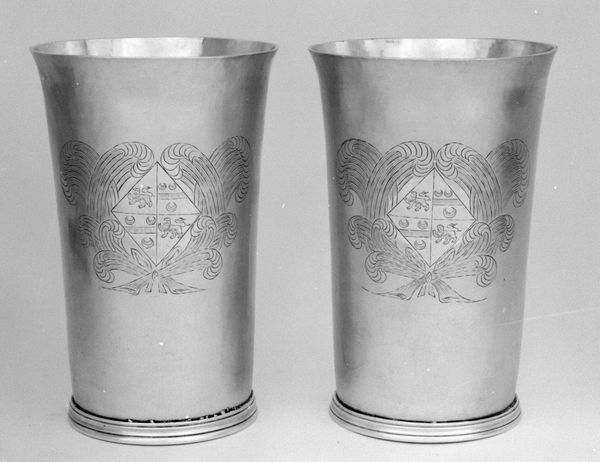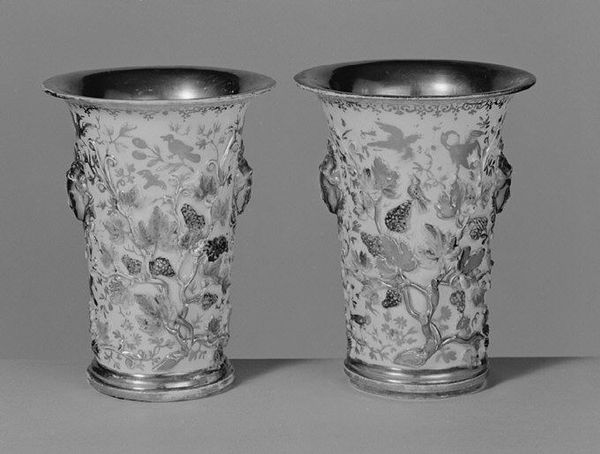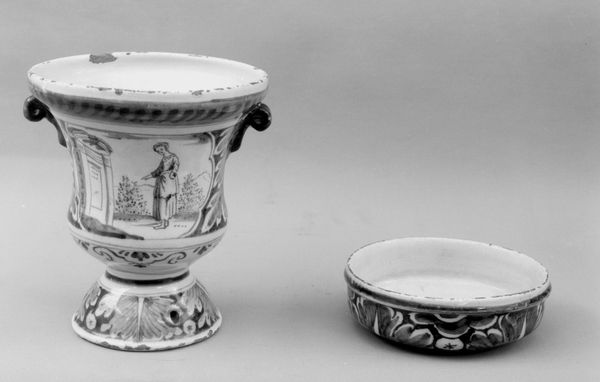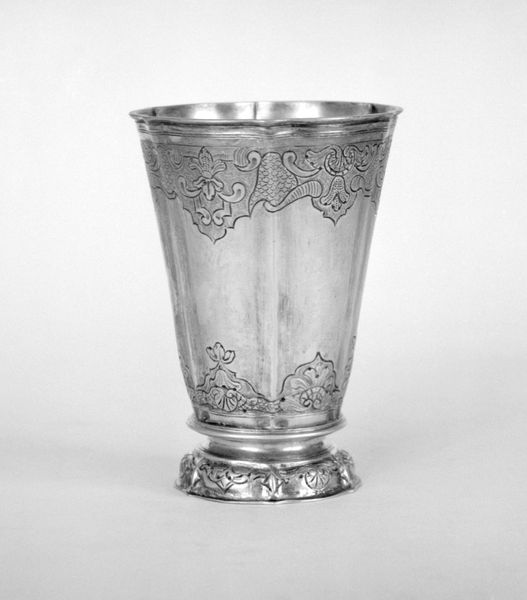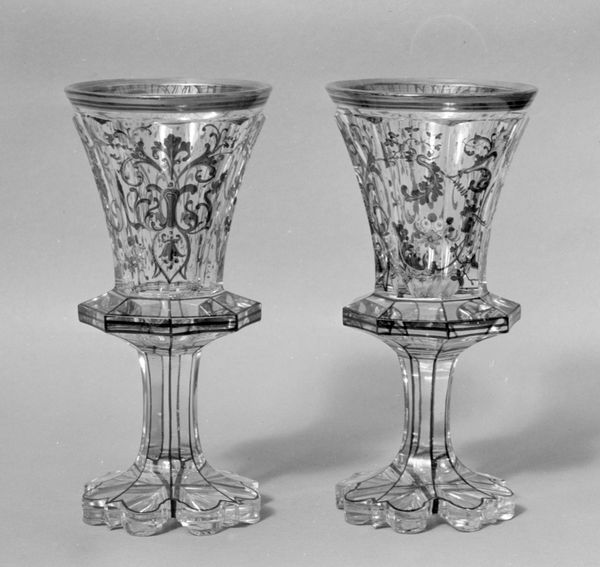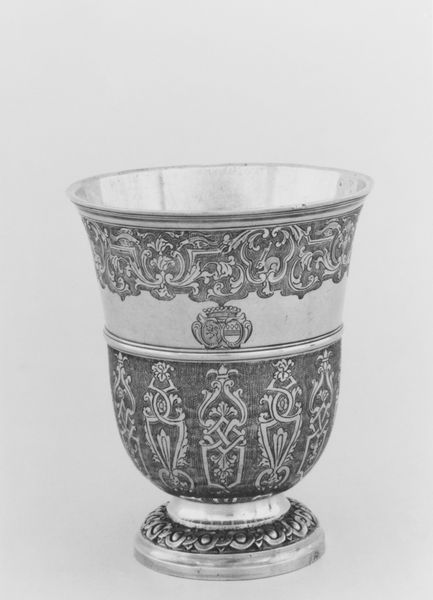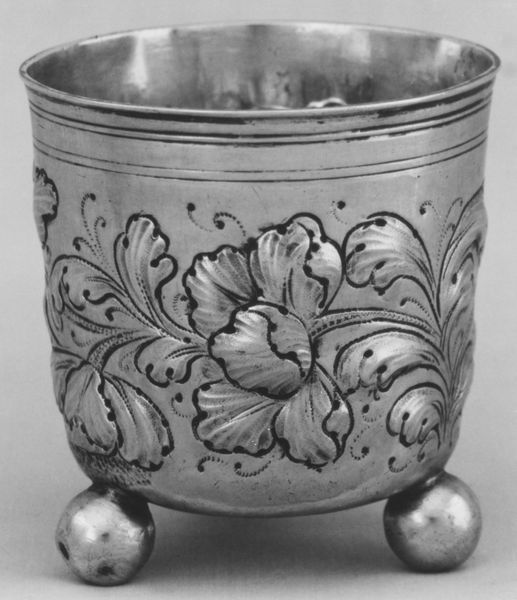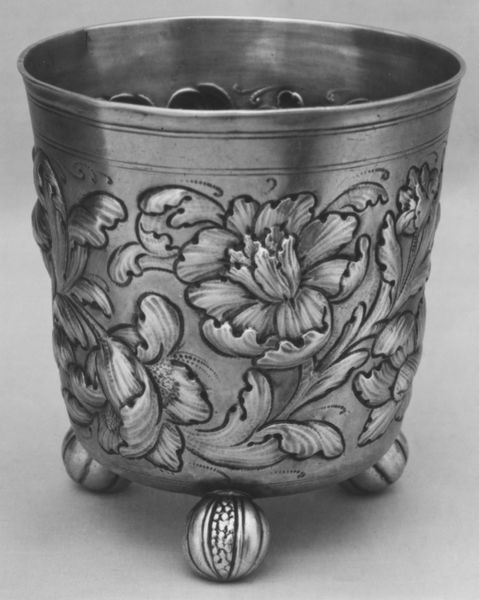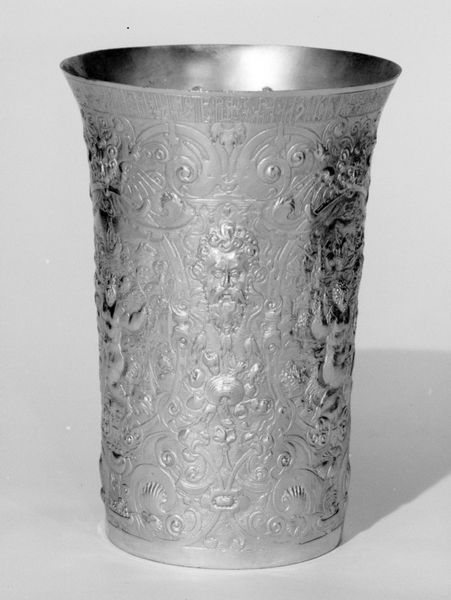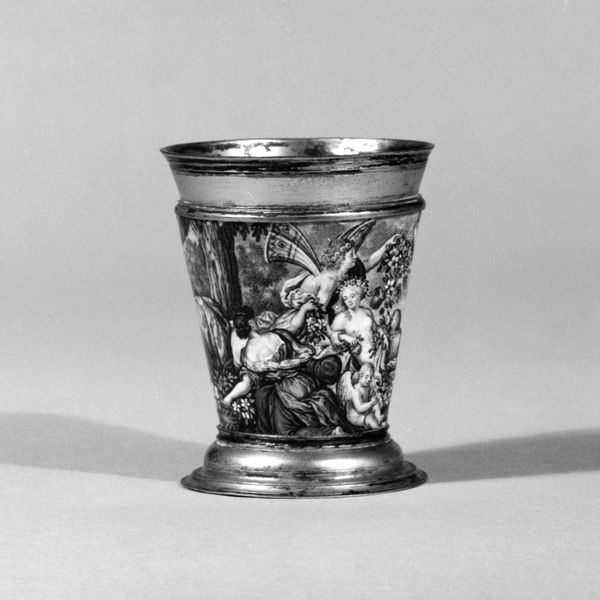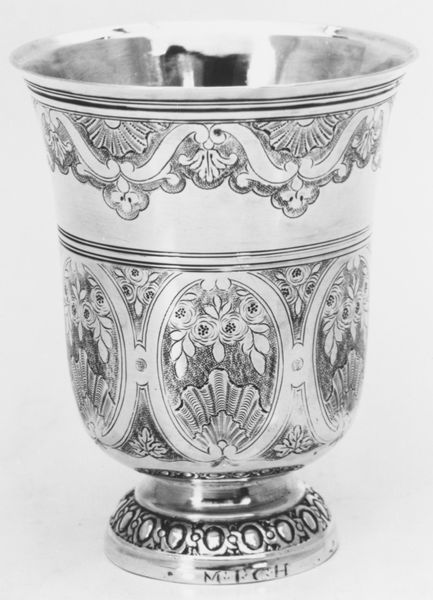
silver, metal, sculpture
#
silver
#
baroque
#
metal
#
sculpture
#
sculpture
#
decorative-art
Dimensions: Overall: 3 1/4 × 2 5/8 in. (8.3 × 6.7 cm)
Copyright: Public Domain
This silver beaker was created by Andreas Pauli in Augsburg, Germany, during the late 17th century. Beakers like this served as functional objects, but their engraved designs reflected the cultural values and social hierarchies of the time. The intricate ornamentation, from floral motifs to heraldic symbols, speaks to the artisan's skill and the patron's wealth. The style demonstrates a clear connection to the artistic trends of the Baroque era, but we can also note the importance of the guilds in the development of such artworks. Augsburg, as an imperial city, was a hub of skilled craftsmanship. The guilds regulated the production and quality of silverwork, ensuring that artisans met certain standards of excellence. To fully understand this beaker, we might delve into archival records, guild regulations, and design books from the period. By examining such resources, we can gain insight into the complex social and institutional contexts that shaped the creation and reception of art.
Comments
No comments
Be the first to comment and join the conversation on the ultimate creative platform.
